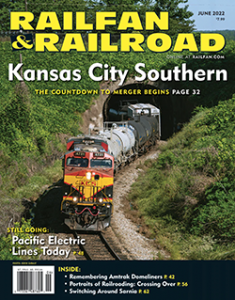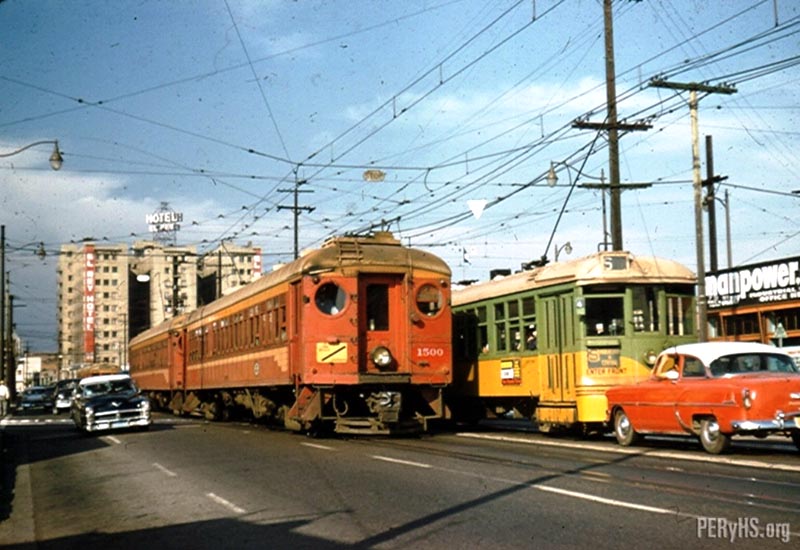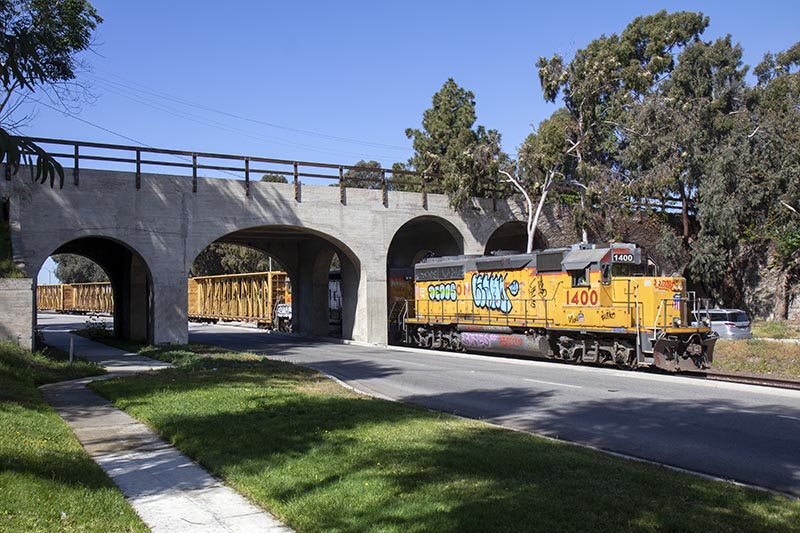 In this issue, we explore the remains of the once mighty Pacific Electric Railway, a company that more than five decades ago linked the Los Angeles basin together with electric interurbans and streetcars. In total, there were more than 1,000 miles of this system throughout Los Angeles, San Bernardino, Riverside, and Orange counties. It’s long gone; PE ceased running passenger trains in 1961, and ceased to exist as an independent company in 1965. You might wonder, given that it’s been gone so long, why anyone would still care about PE. Yet the company remains a beloved fan favorite, not merely among those who are old enough to have seen it in person, but also those who were born long after it disappeared.
In this issue, we explore the remains of the once mighty Pacific Electric Railway, a company that more than five decades ago linked the Los Angeles basin together with electric interurbans and streetcars. In total, there were more than 1,000 miles of this system throughout Los Angeles, San Bernardino, Riverside, and Orange counties. It’s long gone; PE ceased running passenger trains in 1961, and ceased to exist as an independent company in 1965. You might wonder, given that it’s been gone so long, why anyone would still care about PE. Yet the company remains a beloved fan favorite, not merely among those who are old enough to have seen it in person, but also those who were born long after it disappeared.
That people who once rode PE might miss it is natural enough, especially in the railfan hobby, where nostalgia seems to be a core part of the culture. What, though, about those who (like me) were born after its demise?
Part of the appeal is surely the importance that electric interurbans had in the history of the cities many of us live in. For most major cities west of the Alleghenies — and many east of them as well — the interurban was the transportation grid on which our shops, our homes, and our communities were built. In Los Angeles this is especially true, and numerous historians have pointed out that long before the freeway network, it was PE’s lines that shaped where the region’s important centers were located. Put another way, the freeways went where they did because the communities they were built to serve were already there, and those communities already existed because PE put them there.

It’s September 1958, and Los Angeles Metropolitan Transportation Authority has already taken over the remaining Pacific Electric rail lines. A set of “blimps” proceed south on the Long Beach Line at San Pedro and 7th Street, while an ex-Los Angeles Transit (LAMTA) streetcar heads north, followed too closely by a ’56 Chevy. Alan Weeks photo
But there’s something else at stake here, for interurbans were weird in so many ways. They were not the diesel of the present nor the steam of storied pasts, but electrically propelled. They were passenger-oriented, rather than freight-driven. They ran through scenic rural environments but also directly in the center of urban streets. And more than all of this, they had seemingly disappeared entirely from existence. How could something so different, so enticing, so good have once existed, so good that it seemed inexplicable why it would ever have been removed?
The end came in a variety of ways. For PE, it was in the form of National City Lines, a postwar conglomerate that bought up urban rail systems in cities across the country with the promise of modernization, which amounted to abandoning worn-out transit lines that hadn’t seen investment since the Depression era, and then replacing them with buses that ran on streets maintained by municipalities. NCL was owned by a consortium of oil, rubber, and auto manufacturers, and this led to an antitrust lawsuit in the late 1940s. More importantly, it led to a kind of popular memory turned myth, that all the nation’s streetcars and interurbans were bought up by the auto giants to force Americans off the rails and into new cars. A variation of this myth is the central plot of the 1988 film “Who Framed Roger Rabbit.”
Could there have been a world in which PE survived, or at least was a little more intact by the time it got into the lukewarm hands of the Los Angeles Metropolitan Transit Authority in the 1950s? Maybe. But even if it had, it would have been a “legacy” system such as those in Boston, Philadelphia, or San Francisco, with the same plague of aging equipment, backlogs of deferred maintenance, and spotty public funding. Still, the memory of PE remains with us, and as agencies such as the LAMTA continue to expand their rail networks, it serves to remind us that good things require being cared for to survive.
—Alexander Benjamin Craghead is a transportation historian, photographer, artist, and author.


